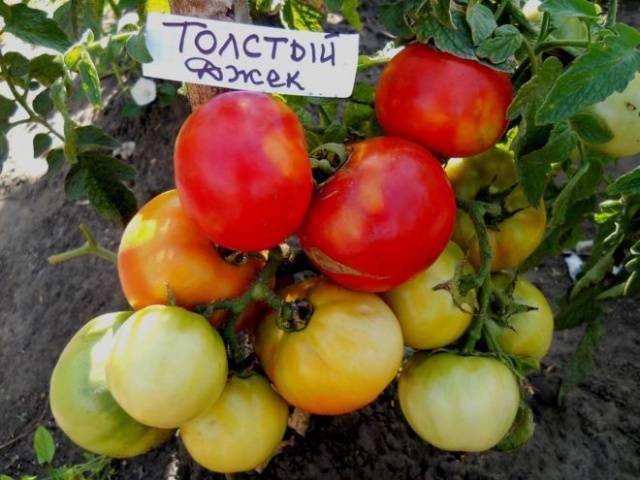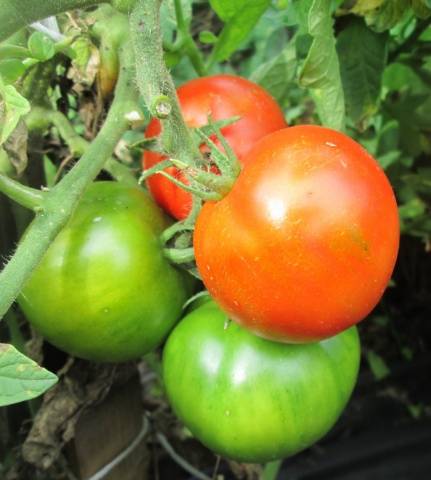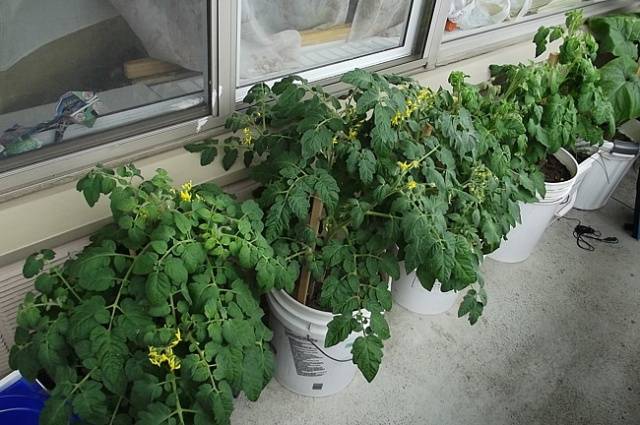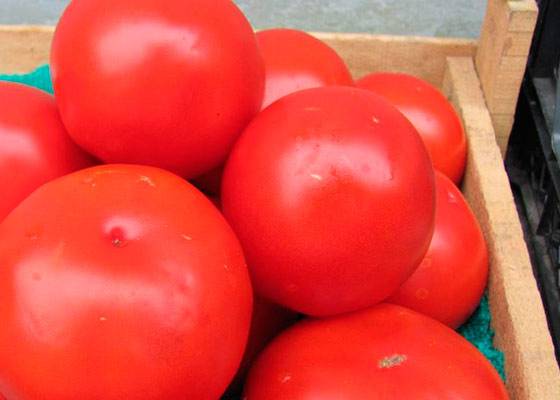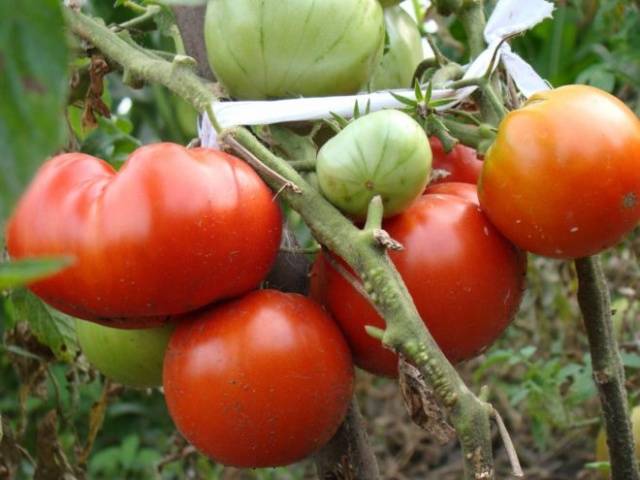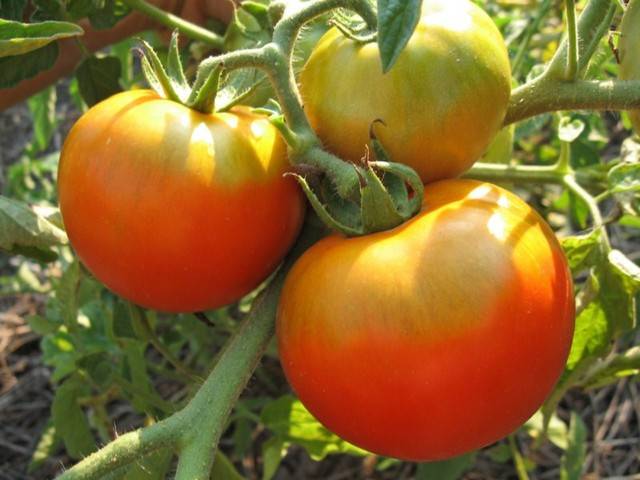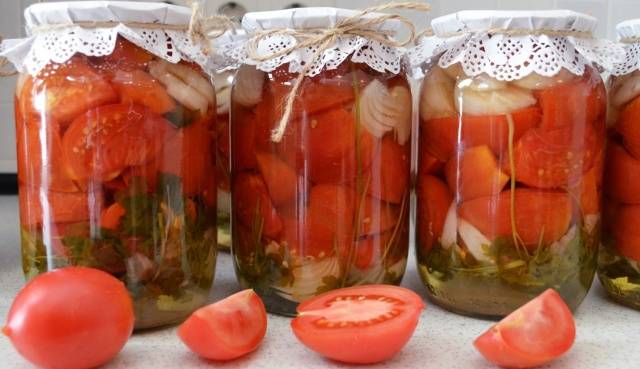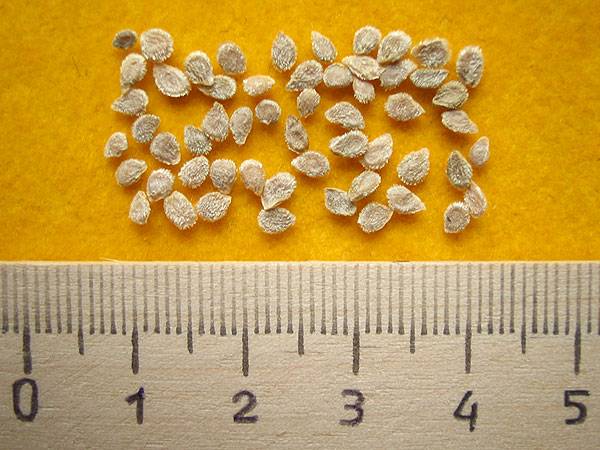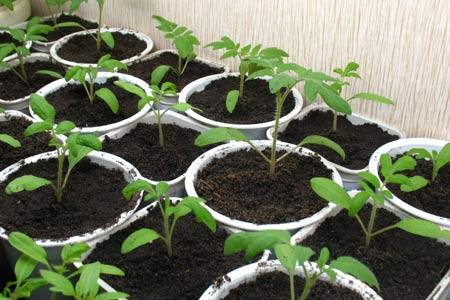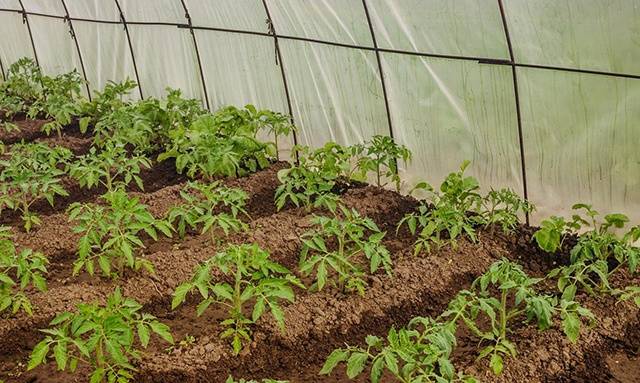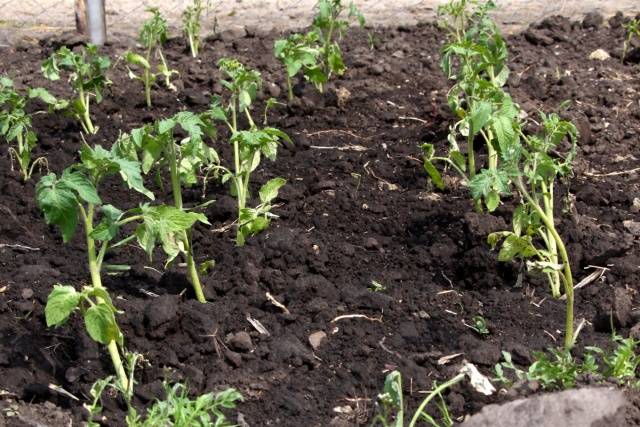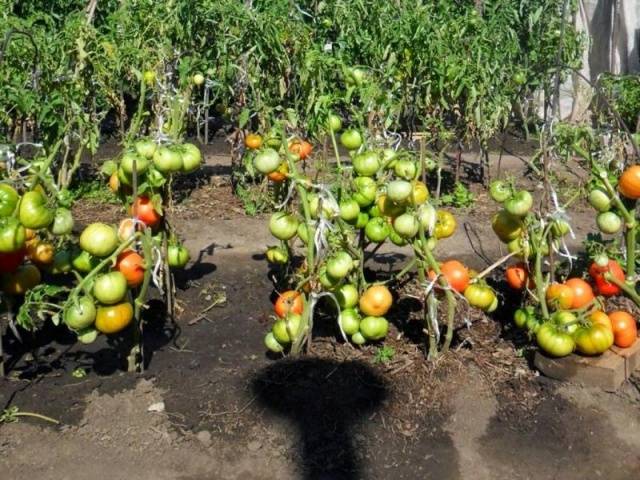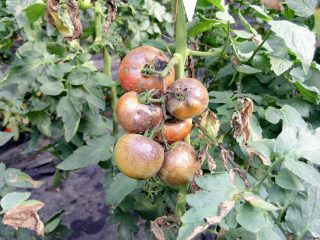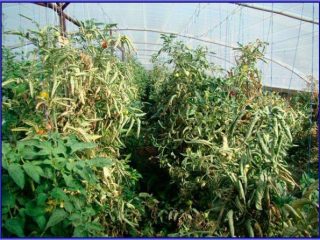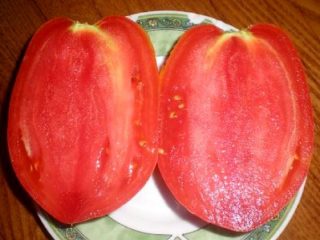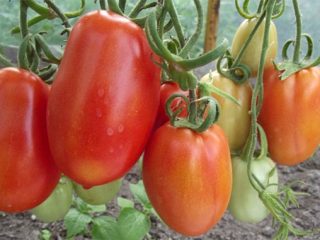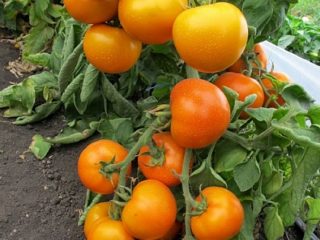Content
Easy care and high productivity - these are the requirements that summer residents place on early varieties of tomatoes. Thanks to breeders, gardeners have a very large selection of different varieties, from classic varieties to new hybrids. Among this diversity, it is difficult to find one that can rightfully be called universal in all respects. After all, it is not enough to grow a tomato; it is important that it has excellent taste and a wide range of applications.
In all of the above parameters, the Fat Jack tomato is in many ways superior to its counterparts. What is unique about this variety, what are its main characteristics? Is it really unpretentious and high-yielding? You will find answers to all questions in this article.
Brief characteristics of the variety
The Fat Jack tomato has already been appreciated by many farmers and summer residents. And this variety deserves special attention. The variety was developed relatively recently. It was registered in the State Register only in 2014.
Tomato seeds have a very high germination rate (98-99%). Growing seedlings does not require the use of special skills and equipment. Plants sprout and grow well without lighting.
“Fat Jack,” according to the stated characteristics, is suitable for cultivation either in open ground, or in greenhouses, or in greenhouses. It belongs to the early varieties, since the first harvest of tomatoes can be harvested within 95-105 days after active seed germination.
When tomatoes are grown in heated greenhouses, they begin to bear fruit in early to mid-June. In open ground, fruiting begins 2-3 weeks later, which indicates its early ripening.
By planting some plants in a greenhouse and some in open ground, you can extend the fruiting period and get a harvest of tasty tomatoes over a longer period.
Planting "Fat Jack" tomato seeds directly into open ground is possible only in southern regions with a warm climate. But in the central and northern regions, it is recommended to grow tomatoes in seedlings. But a tomato lover from Siberia grows “Fat Jack” by planting the seeds directly in the beds, and in harsh climate conditions he gets an excellent harvest.
Tomato bushes are low. Reach no more than 40-60 cm in height, spreading. The foliage is average, the color and shape of the foliage are standard.
The "Fat Jack" tomato does not require regular pruning. But this condition should be observed only if you have already formed a bush of 3-4 stems.
The Fat Jack tomato is a determinate variety. The fruits have a classic bright red color, the shape of the tomatoes is round-flat.
Like all low-growing plants, tomatoes of this variety require timely removal of the lower leaves to improve aeration of the root part of the plant and prevent root rot.
Tomatoes do not need a mandatory garter. But given the number and size of the fruits, it is still worth tying the plants to a support to avoid breaking off the clusters.
Fruit characteristics
A brief description and characteristics of the “Fat Jack” tomato fruit comes down to the following parameters:
- Round-flat shape;
- Bright red color;
- Average weight 250-350 grams;
- The pulp is dense, aromatic, sweet;
- Universal tomatoes.
Among other things, tomatoes are distinguished by their high yield - up to 6 kg per bush - with a rather modest size.
Those gardeners who have already planted tomatoes of this variety note that the tomatoes have a sweet, rich tomato taste with a barely noticeable sourness. The fruits ripen in waves, which gives housewives the opportunity to process the harvested crop without difficulty and unnecessary haste.
Advantages and disadvantages of the variety
The “Fat Jack” tomato variety was bred for growing on private plots. But given the many advantages, it is also suitable for farms specializing in growing vegetables. The following advantages distinguish “Jack” from other varieties of tomatoes:
- Can be grown in greenhouses, greenhouses or open ground;
- Tomatoes can be planted either in seedlings or without seedlings;
- resistant to minor temperature changes;
- resistant to many diseases;
- high seed germination;
- excellent fruit set in any weather;
- with small bush sizes, excellent yield indicators;
- size and taste of tomatoes;
- does not require special skills and additional hassle during planting and subsequent care;
- precocity;
- excellent presentation;
- tolerates transportation well;
- does not require regular stepsoning;
- wide scope of application;
- It is not a hybrid, which makes it possible to harvest seeds yourself.
With such a huge number of advantages, “Fat Jack” has practically no disadvantages, except for two:
- the need to form a bush to obtain high yields;
- the need to carry out preventive measures against diseases and pests.
But these disadvantages are so insignificant that growing tomatoes will not cause you serious problems or difficulties.
Application area
Initially, the Fat Jack tomato was bred as a salad variety. That is, its fruits are suitable mainly for cutting into summer salads and eating fresh. But those gardeners who planted tomatoes on their plot and managed to evaluate the quality of tomatoes speak of it as a universal-purpose tomato. Tomatoes can be used in almost any area:
- for preparing tomato juices and pastes;
- preparing various sauces, ketchups and adjika;
- as a component in the process of preparing a variety of dishes, casseroles and baked goods;
- for whole-fruit canning;
- for winter preparations - salads, lecho, solyanka.
Housewives who are actively preparing a generous harvest for the winter also use tomatoes for quick freezing in sliced form or for drying.Subsequently, these preparations are added to the first and second courses during the cooking process.
It is worth noting that during the preservation process, tomatoes do not lose their excellent taste. Fruits do not crack when canned whole fruit.
Rules for planting and subsequent care
The “Fat Jack” tomato variety is recommended for growing in greenhouses, open ground and greenhouses. Accordingly, there are two methods of cultivation - seedlings and non-seedlings.
But whatever method you choose, you can be sure that with minimal physical effort you will get a bountiful harvest of aromatic and extremely tasty tomatoes.
Growing seedlings
Growing Fat Jack tomatoes is no more difficult than regular tomato varieties. Self-harvested seeds must be soaked for 2-3 hours in a 2% solution of potassium permanganate (pink color). Purchased seed material does not require such processing.
If you wish, you can soak the seeds for a day in warm water with the addition of any composition that stimulates the formation and growth of the root system. But even without this event, tomatoes sprout quickly and amicably.
Seeds for seedlings should be sown in late March - early April. Picking should be done in the phase of 2-3 well-formed leaves, combining it with the first fertilizing with mineral fertilizers.
You need to replant seedlings:
- in the greenhouse at the end of April - beginning of May;
- in the greenhouse in mid-late May;
- in open ground in early - mid-June.
Many summer residents add crushed eggshells to each hole when transplanting tomatoes. But this type of feeding is completely useless.Yes, eggshells are rich in calcium and minerals, but at the time of active growth of green mass, the plant needs nitrogen.
Moreover, before fertilizing the soil with shells, they must be washed, dried and literally ground into dust. Whether the effort is worth it, and whether there is a result from these actions, is a moot point.
After transplantation, tomatoes need to be fed twice: during active flowering and fruit formation.
Despite the fact that “Fat Jack” does not require a garter, it is still recommended to tie the plants to a support - not every bush can withstand a load of 5-6 kg.
Bushes need to be formed into 3-4 stems. After formation, the stepsons do not grow so actively, so you only need to remove excess side shoots from time to time so that all the forces and nutrients are directed to the formation, growth and ripening of the fruits.
Growing tomatoes without seedlings
You can plant Fat Jack tomato seeds in open ground as early as mid-to-late May. The main condition is sufficiently well-warmed soil and no threat of possible spring frosts.
The area for planting tomatoes should be sufficiently illuminated, and the soil should be loose and fertile. You need to dig up the ground in advance, 7-10 days before the proposed planting.
Immediately after planting, the beds should be watered generously with warm, settled water and covered with any non-woven covering material or film. Open the beds during warm, sunny weather, and be sure to close the beds at night.
After 2-3 weeks, you need to thin out the seedlings and feed the tomatoes with complex mineral fertilizers.
Subsequent care of plants consists of the usual activities for any gardener:
- weeding;
- watering;
- loosening;
- bush formation;
- removal of stepsons;
- feeding
The recommended planting scheme is 5-6 plants per 1 m². When growing tomatoes in beds, the distance between plants should be at least 35-40 cm.
It should be remembered that when growing Fat Jack tomatoes in open ground, the tomatoes ripen a week to a week and a half later than in a greenhouse.
To prevent root rot, be sure to remove the lower leaves to ensure sufficient air exchange. And one more recommendation - remove from the site weedsso that they do not cause diseases in tomatoes.
Tomatoes are highly resistant to many diseases. But you should not forget about preventive treatments against diseases and pests.
If you follow the recommendations for planting and subsequent care, “Fat Jack” tomatoes produce a bountiful harvest even when grown in open ground using the seedless method. Residents of the Siberian and Ural regions, whose climatic conditions are famous for the late arrival of spring and late returning spring frosts, appreciated this variety.
The author of the video shares his impressions of the “Fat Jack” tomato variety, its cultivation, and also gives a brief description of its fruits
Conclusion
The characteristics and descriptions of the “Fat Jack” tomato variety, as well as numerous reviews from amateur gardeners and gardeners, indicate that it is worth growing at least a few bushes on your plot as an experiment.Perhaps you will like the taste of tomatoes, and it will take its rightful place on your list of must-plant varieties.
